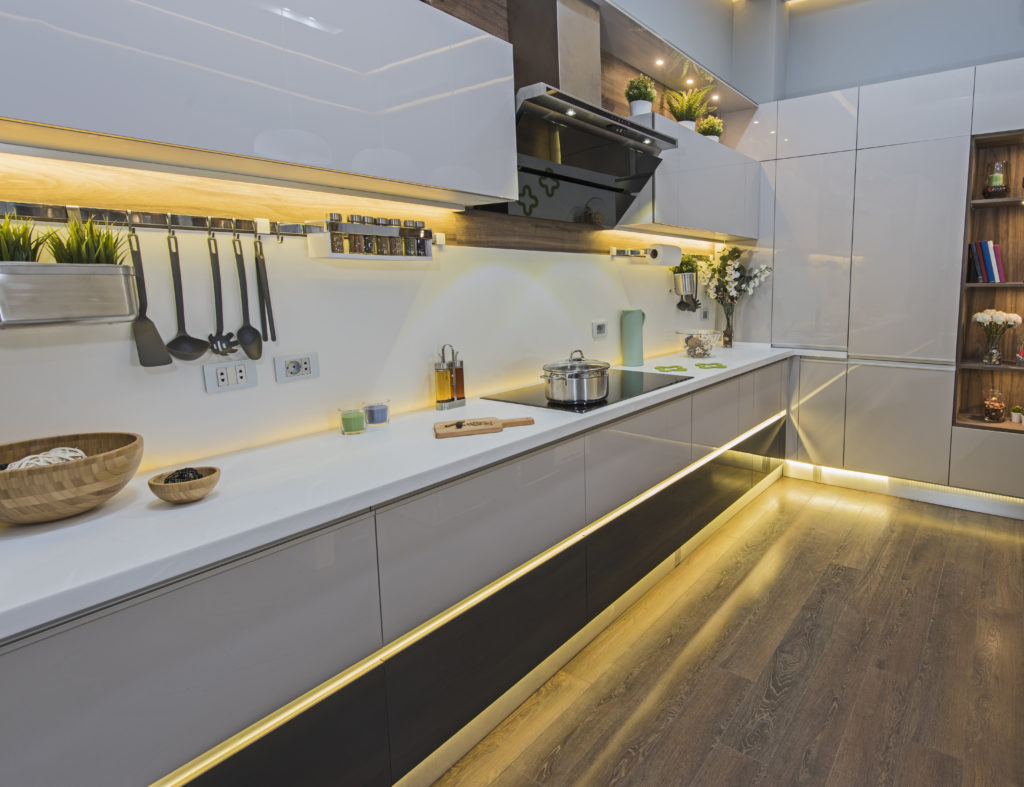In every house, indoor air quality is a concern, but newly-built houses are more airtight and require an efficient kitchen exhaust system. Despite the fact that there is no national building code that requires the installation of a ventilation system in the kitchen, national standards and codes are in place for your health and safety.
A kitchen exhaust fan may be required by some state building codes. Furthermore, Code Watcher points out that since 2009, the International Residential Code (IRC) includes a section on air replacement in houses with active kitchen ventilation. If you have questions about ventilation requirements, check with local authorities or with a local HVAC professional.
Why Your Kitchen Needs Ventilation
When you cook food on the stove, grease, oils, and fats are released into the air and eventually settle on the walls and cabinets. A major reason for ventilating a house is that cooking releases toxic gases and ultra-fine particles that circulate throughout the house and are absorbed into everyone’s bodies.

If you don’t have an exhaust hood, cooking also generates excess heat, which raises the temperature in the kitchen, which increases moisture retention. Cooling air condenses moisture, which can damage finishes or support mold growth on walls, countertops, and cabinets. Even if you don’t cook, condensation can be a problem without an adequate exhaust system.
It was sufficient to circulate air through intentional openings, like windows, and unintentional ones, like cracks in walls and gaps in floors, in the past. Besides being hit-or-miss from the beginning, this approach doesn’t work in modern houses that have been sealed to save energy.
What Is Required, and What Isn’t?
Kitchen ventilation is not required in new construction or remodels in New Jersey. The installation of a range hood will satisfy most local codes. You calculate the required range hood capacity by dividing the total heat output of the range in British thermal units (Btu) by 100 (for intermittent systems) or 400 (for continuous systems).
For a 40,000 Btu gas burner stove, which is standard, a range hood should have a 400 CFM capacity if it can be turned on and off. Continuously running systems need only be able to transfer 100 cfm, or a quarter of the capacity of intermittent systems. You’ll be compliant if you follow the requirements for gas burners, as an electric stove produces less heat and emits no combustion gases than a gas stove.
Requirements for a Makeup Air System
A kitchen exhaust fan draws air from other parts of the house when it is running, so if your house is well-sealed and energy efficient, you may be able to avoid the following problems:
- Negative pressure could draw cold air from outside through your chimney and heating vents, increasing your heating bill.
- It operates at a lower efficiency since it does not receive enough air.
- Without makeup air, a kitchen vent fan can create negative pressure that pulls exhaust gases from gas-burning appliances into the house.
Can Ductless Range Hoods Help Circulate Air?
A ductless range hood is also known as a recirculating hood, and the name says it all. Instead of venting the exhaust outside, ductless systems feed it through a filter and back into the room. A ductless system has the advantage of being able to be installed anywhere, since there are no ducts to install, and it is also inexpensive. In spite of this, the disadvantages outweigh the advantages in most cases.
Despite the fact that many contractors do not even consider ductless range hoods as true ventilation systems at all, and even though they come at a reduced price and do not require the installation of ductwork, they should be avoided as much as possible. It is important to keep in mind that if you are installing a cooktop in a kitchen island or in some other place where conventional ductwork is not practical, you may want to consider installing a downdraft system, which allows for the installation of ductwork underneath the flooring.
Getting the Most From Your Range Hood
Installing a range hood too far above the cooking surface is one of the most common mistakes homeowners make. When you do this, the suction of the fan isn’t strong enough to capture all the cooking gases and microscopic particles, so they circulate freely. The hood should not be too low or it will get in the way, so it should be 24 inches above the cooking surface.
